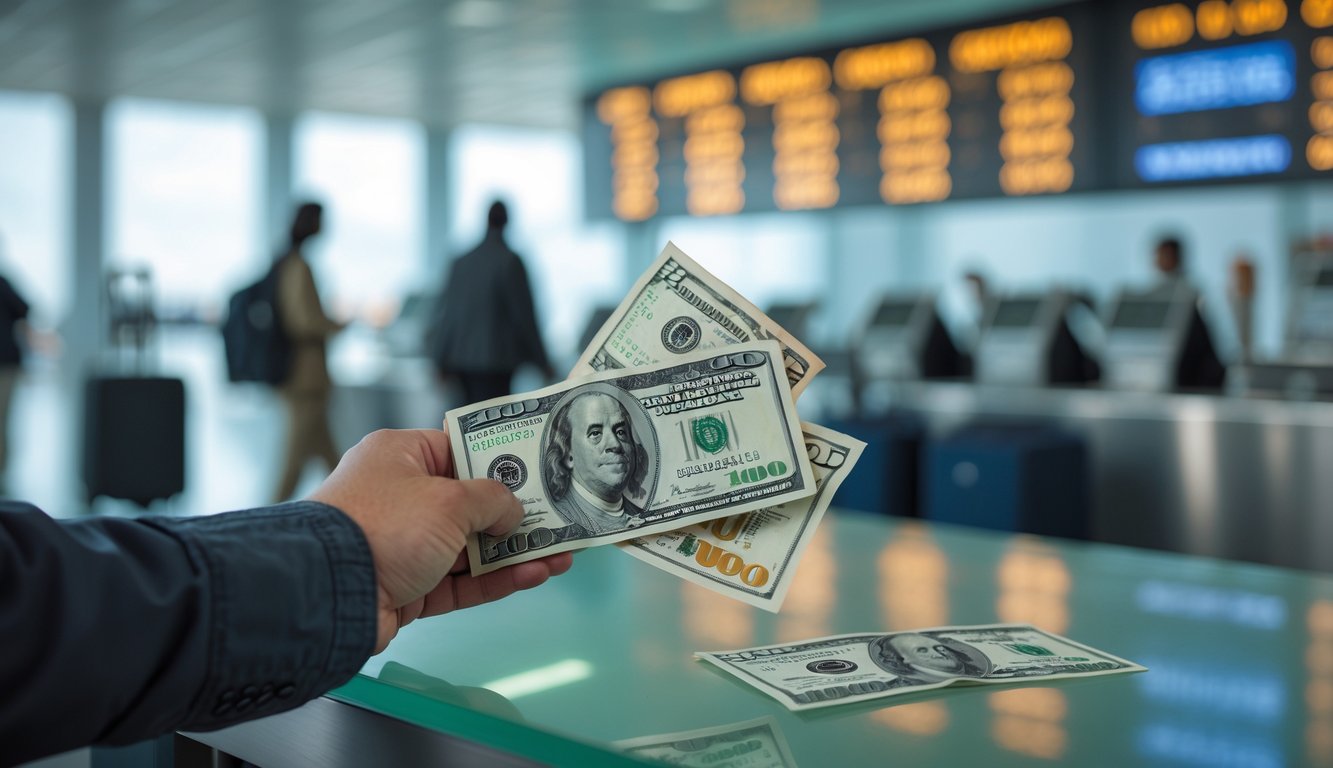
Mexico and Mexico City: Stretching Every Dollar
Bags open, receipts everywhere, pesos multiplying like rabbits—how far does a dollar even go in Mexico City right now? Every random Uber, every late-night taco, it all comes down to the exchange rate that refuses to make sense but somehow keeps giving Americans more slack than I expected.
Daily Expenses and Cost of Living
Walk Insurgentes for five minutes and you’ll figure out nothing’s priced for tourists. Buses are 8 pesos, coffee’s under $2 if you dodge Starbucks, and yes, the Metro’s still 5 pesos. Peso’s been sliding—about 19 per dollar in August 2024, up from 16.8 last year, so that’s a 13.5% boost for Americans. Weirdly, some shops just pretend nothing changed.
How do you even budget when sunscreen at the pharmacy is 230 pesos and the taco guy next door wants 15? Renting Airbnbs under $45 a night starts to feel suspicious—what’s the catch? Local friends make fun of my mercado haggling (“tourist energy,” they’re right).
Trying to calculate daily costs is pointless. Public transit, street markets, hole-in-the-wall eateries, little tiendas—they all stretch your cash in ways that never match up with what I spent in Chicago or Austin. Not even close.
Local Cuisine and Dining Experiences
Food, everywhere, all the time. Any plan for three proper meals dies as soon as someone shouts “tlayuda” from a cart. Sure, every travel site says Mexico City is “affordable,” but what does that mean if you’re stuck at a hotel buffet instead of at Mercado Medellín or a lunch counter where dinner’s 90 pesos?
There’s a real gap between a quick al pastor at El Huequito (30-40 pesos per taco) and, say, chef Enrique Olvera’s tasting menu at Pujol (thousands of pesos, book way ahead, don’t ask about my friend’s $300 wine bill—he won’t shut up about it). Smaller comedores still do full comidas (entrée, sides, juice) for $4-5, but nobody tells you agua fresca refills cost extra unless you ask.
What always gets me: eating at 10 p.m. like a local, then finding out dessert places close at 8. Daily menus vanish by noon, so you pay less for home-cooked stuff—if you’re quick. That’s the gamble with markets. Never skip something “weird” and regional; it’s never there the next time.
Unique Travel Opportunities
Pulque and pulquerías—can’t get them out of my head. Not that I love pulque (texture’s off), but even with tourist math, niche stuff and day trips barely dent your wallet and don’t feel like packaged tours. Teotihuacán? DIY bus, 120 pesos round trip, admission under 100. Guided museum tours, art classes, lucha libre tickets—rarely over $20 unless you’re on some glossy Viator thing.
Weather ruins more plans than money. Nobody tells you how cheap it is to cool off in a neighborhood pool or the free art shows in Roma and Condesa on Sundays. Last time, everyone obsessed over Xochimilco boats, but I got lost in Coyoacán, ate a criminal number of churros, spent maybe $6. Then it’s back to juggling coins in the mercado line (they’ll glare if you try U.S. coins).
If you care about stretching dollars, skip museum gift shops (200 peso mugs? No thanks) and look for indie studios. Prices make no sense until you realize how flexible cash is, especially with the exchange rate bump—track it at eldolarenmexico.com. Even paying in pesos, I never know if I’m getting a deal, but there’s always another festival, free walking tour, or $3 movie ticket hiding somewhere.
Europe on Sale: Spain, Portugal, and Greece

I keep checking exchange apps, still get it wrong, but then I add up café receipts and realize Spain, Portugal, and Greece are basically a secret savings club for Americans. Exchange rates are the best I’ve seen in ages, and in these spots, daily costs just don’t spiral out of control like everywhere else.
City Escapes in Barcelona and Madrid
Dragged my suitcase through Sants station in Barcelona, overheard some American dad (shorts, dad hat, baffled by everything) asking if tapas are ever actually cheap. They are. I got a tortilla and a shot of espresso for less than five bucks near El Born—actual local spot, not some Instagram trap. Strong dollar-to-euro exchange rate, so a €5 bill basically hits my card for $5.15. Couldn’t make this up.
Metro in Madrid? Cheaper than my sad drip coffee at home. Single rides start at €1.50, so yeah, about $1.50, give or take—Xe says rates are basically even, but who knows, maybe they’re lying. And sure, the “regional tax” on hotels in the center is annoying, but you can still snag a 3-star room near Puerta del Sol for under $100 a night during the week. Real estate agents keep whining about low inventory, but I booked three nights with Amex points and barely noticed a dent.
Skip the endless lines at the Prado. I’d rather wander Lavapiés, sip vermouth on tap for €3, and people-watch. Who’s got the patience for museum fatigue? Not me.
Cultural Discoveries in Portugal
Lisbon: Americans clogging the sidewalks, all chasing pastéis de nata, totally missing the point that you can eat in a neighborhood tasca for €9 including tax and bread. Not a TikTok myth—I paid €23 for two people, Sagres beer included, in Alfama. XE and MoneySuperMarket’s travel money data say Portugal is still one of the cheapest euro countries for Americans. I mean, does anyone fact-check these rankings? I don’t.
Met a local guide, João, last winter. Deadpan: “Yes, the tram’s two-euro. No discount for looking confused.” Is that a Portuguese thing? Day passes for Lisbon’s metro cost around €6.80, barely over $7. That’s less than a sad sandwich at Newark Airport.
Thinking about working remotely from Porto? Don’t trust hotel Wi-Fi. Cafés on Rua das Flores will give you the password, but you have to order first. Actual advice from a barista: “You ask for Wi-Fi before coffee, maybe you forget your coffee.” Americans can’t help themselves.
Greece’s Allure for American Travelers
Santorini—everyone’s obsessed with wedding photos, but nobody tells you what dinner actually costs. €12 for moussaka at a regular taverna, not even with a view. That’s, what, $12.40? Checked the exchange rate before ordering wine because I’m paranoid.
Athens metro tickets? €1.20, feels like 2019. The conductor always glares at me when I fumble the card reader. Ferries to the islands—book online, sometimes economy tickets are under €30, but the XE app updates faster than half the ferry websites, which is weird.
Last August, met an American on the Acropolis steps. She swore, “Greece is expensive now.” Then she spent less in five days than she would in Boston for a weekend. Pro tip: buy a frappe and you won’t get gouged for a sunbed. Espresso is still under two euros, and that’s not changing.



